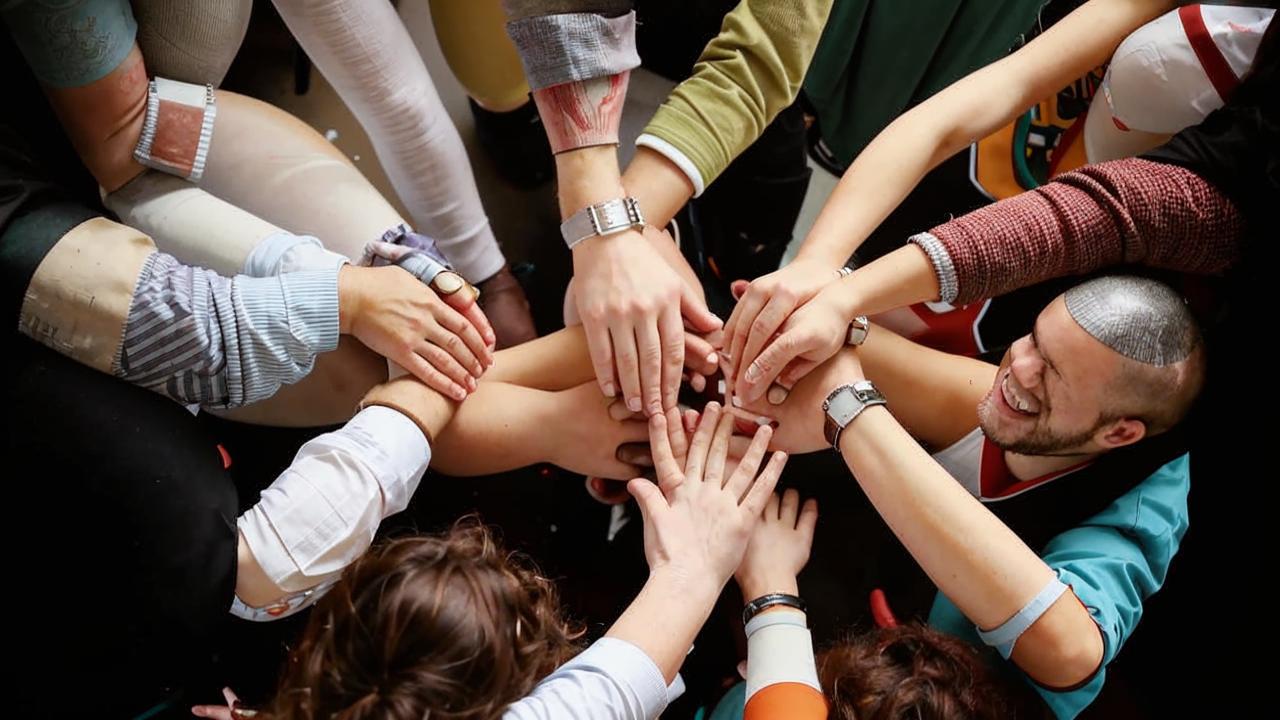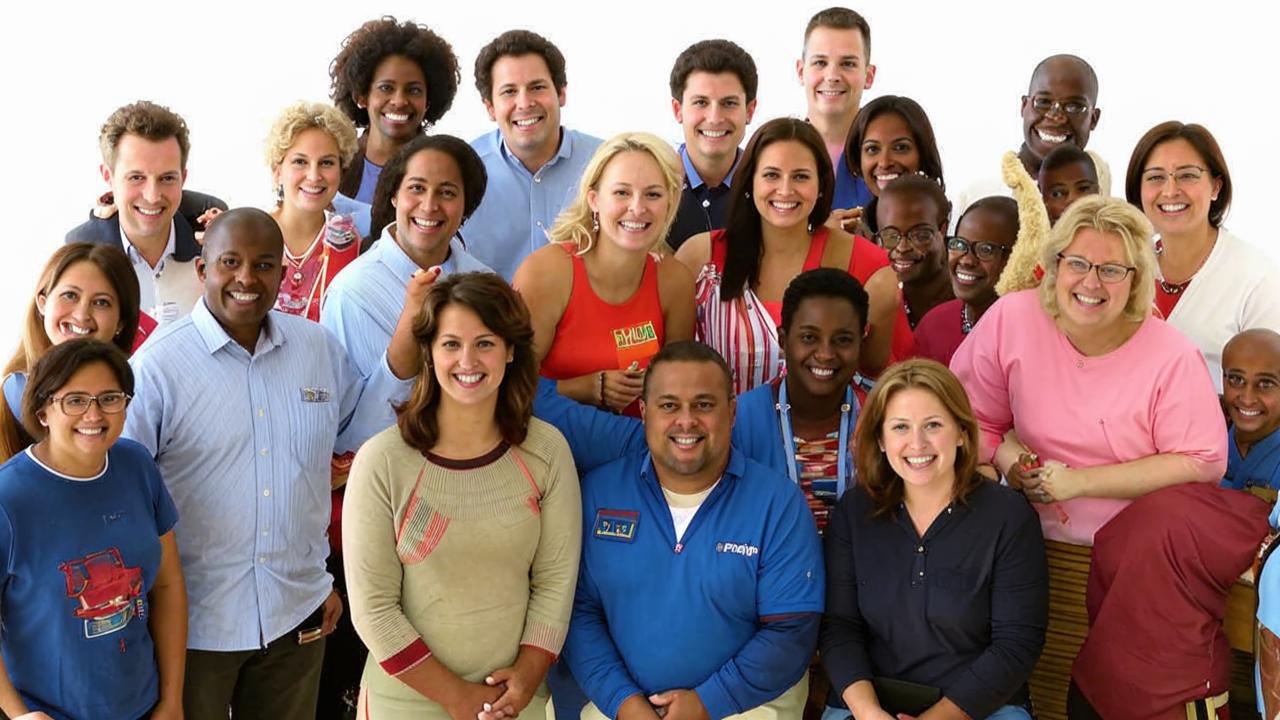Team building today is an integral part of the development of modern organizations seeking to create an effective and cohesive team. When competition among companies is becoming increasingly fierce, in addition to building a staff of qualified employees, it is important to be able to motivate and unite people. This way, the team can work synergistically and achieve its goals faster.
But it is not always easy to do this. It is important to maintain harmony and feel the desires of employees. Let’s understand how not to do harm with after-work activities. How to make it so that the team after the general gatherings will want to show efficiency, and not write a resignation letter?
What is team building?
Team building literally translates from English as “team building”. That is, these are certain activities that are aimed at team building, developing communication between employees. During team building everyone can actively show their best qualities and demonstrate to the management the skills not previously used in the work.
The history of team building has decades of practice and research. Such a model of team building was borrowed in the 1960s from the sports world. It was from this period that team building began to be used as a tool to achieve success by large corporations.

But even earlier, in 1932, American psychologist and sociologist Elton Mayo proved the theory that a positive socio-psychological climate in the team can improve the performance of the company. He noted that sometimes the impact of employee team building shows better results than comfortable working conditions.
The research and practice of team building showed the effectiveness and at many enterprises in the USA, Great Britain and France in the 50s. During active games employees could show their individual characteristics, demonstrate leadership qualities. That’s why the method took root in corporations and it began to be successfully implemented in companies around the world.
Team building and employee motivation are closely related, because a successful team is a collective inspired to achieve common goals. This is what psychologists believe. The events are also a tool of corporate culture, helping to reinforce the company’s values and principles.
Team building can include various activities in nature and games in the office. All of them are aimed at establishing trusting relationships, increasing motivation and strengthening ties within the team.
The main types of teambuilding
There are several varieties of activities that can be conducted among employees. Team building is worth adapting to the goals and needs of a particular team. The choice will depend on the preparedness and skills of the employees.
1. extreme
This type of team building event includes challenges based on extreme activities: climbing mountains, archery, going through difficult rope courses. Gathering together in nature promotes team building, leadership, and overcoming obstacles together.
2. intellectual
In this case, participants solve puzzles, problems and riddles. Such activities promote analytical skills and teamwork within a team.
3. Sporty
This type of team building includes holding soccer, volleyball, basketball matches or other sports competitions. They help to develop the team’s sporting spirit, mutual understanding and cooperation.

4- Creative
Participants may be involved in the collective creation of a theater production, song writing, clay modeling of household items. This promotes creative skills and an overall inspirational atmosphere.
5. Social
The collective can also be involved in volunteer activities. For example, helping shelters with animals, clean-up days. Such activities will also become a positive example for others.
Regardless of the type, the main purpose of team building is to create a unified team and develop interaction within it to achieve common goals. It is worth to dwell on this in more detail.
Goals of team building
In addition to strengthening team spirit and improving cooperation among team members, team building can solve a number of other important company objectives.
1. Increase productivity
Team building can increase a company’s productivity, as established collaboration helps to accomplish tasks more efficiently.
2. Leadership development
Team building can identify and develop leadership skills in participants. This, in turn, promotes more autonomy within the team.
3. Building trust
The goal of team building is to create a trusting environment in which team members can openly discuss problems, express their thoughts and ideas. And afterwards – to transfer such a model of behavior into work processes.

Types of team building
With the help of teambuilding events, managers are able to solve emerging problems in companies. Also team building can become a way to achieve specific goals and improve certain aspects of the team’s work.
1. Problem-oriented events
This type of team building event is aimed at solving specific problems and challenges faced by the team. Corporate events aim to support collective problem solving, encourage creative thinking and the development of solution strategies.
2. Communication-oriented events
This type of team building focuses on improving communication and interaction within the team. Tasks, games and exercises are designed to develop listening skills, effective communication, establish trust and create a positive team environment.
3. Creative-oriented activities
This type of team building promotes creativity and innovative thinking within the team. Activities may include collective solution of creative problems, work on projects that promote imagination and spontaneity.
The choice of a particular approach may depend on the goals the team wants to achieve and the characteristics of its work.

Stages of planning and conducting team building activities
After sorting out the types and kinds of team events, the most difficult stage comes – the organization of the gathering of employees. There are many aspects to consider to make the team building event a success.
1. defining goals and objectives
At the beginning of team building planning it is important to clearly define the goals and objectives of the event. The team should understand exactly what they want to achieve through the team building event. Goals may include improving collaboration, developing communication skills, increasing motivation, and improving teamwork.
2. Selecting an appropriate activity
Once the objectives have been determined, the next step is to select an activity. It is important to understand what kind of pastime is conducive to the objectives and interests of the participants.
Whether sports competitions, quests or training seminars can fulfill the objectives.
3. Creating a favorable environment
For a successful team building event, it is necessary to create an environment where participants can comfortably communicate with each other. It is necessary to think about the venue, day and time convenient for all employees. It is important to create a positive and accommodating atmosphere.
In addition, other important steps include preparing the participants, planning the schedule and activities, and evaluating the results after the event.
The role of a facilitator in organizing corporate events
Once the objectives of the team building event have been defined and sorted out, the question of organizing the event arises. How to make sure that the event does not turn into a chaotic mass of people hanging around doing nothing? Organizing team building events can take up a lot of resource.
For team building events, a facilitator is often used. This is a specialist who helps a group of people to achieve certain goals by facilitating the communication process, resolving their conflicts.
A facilitator can work both with teams and individual participants. The specialist usually does not act as an expert or initiator, but rather helps the group to make its own choices by developing strategies, methods and processes to achieve goals.
Important skills of a facilitator are communication skills, the ability to listen and understand the perspectives of different participants. But he or she is also able to plan and manage processes during team games.
The facilitator should create an atmosphere in which everyone feels comfortable to participate equally in the event.

The main tasks of a facilitator are
1. Maintain openness and respect
The facilitator should encourage openness among participants, create an environment where opposing viewpoints are respected and differences of opinion are accepted. He should show that every voice of the team building participant is valuable.
2- Provide a safe environment
The facilitator should create a comfort zone where participants can freely express their thoughts and feelings and feel secure.
3. Take into account the needs of all participants
The facilitator should be sensitive to the differences in learning styles, cultural backgrounds and preferences of the participants to create a space that reflects diversity and respects everyone.

Evaluating the effectiveness of team building
Effective evaluation of team building plays an important role in understanding how the team event went. This is done through various methods of collecting feedback and analyzing the results. These will help to make adjustments to improve future events.
1- Surveys and questionnaires
A common way to collect feedback from team building participants. Questionnaires can include questions about perceptions of the event, satisfaction and suggestions for improvement.
2. Focus groups
Discussions with participants can provide a deeper understanding of their impressions and reactions to team building activities. The discussion moderator asks questions and keeps the dialog going for feedback.
3. individual interviews
Conducting interviews with participants can provide a more detailed understanding of their personal experiences and contributions to the event.
Based on feedback and analysis, team building organizers can make adjustments to improve results. The program may be modified in the future. New tools or approaches will be used.
Continuous evaluation and improvement of team building activities allows relationships to develop within the team.

Benefits of team building

Business psychologist, clinical psychologist of “Clinic of Dr. Anikina”
“Team building is a popular integrated approach to developing communication skills within a team. The method is based on a deep understanding of human psychology and group dynamics. Today’s labor market is a job seeker’s market, and competition for young talent and retention of experienced employees is increasing among companies. Simultaneously with the constant staff shortage, the requirements for the quality of work are growing, and as a consequence, team building is becoming an indispensable tool for achieving companies’ business goals.”
Team building is based on Albert Bandura’s social learning theory. This theory speaks to the importance of observation, imitation and modeling in learning. Team building emphasizes communication exercises that allow employees to learn from each other and acquire the skill of sharing information effectively.
Trust among coworkers correlates with improved performance, for managers this becomes the basis for deciding to hold such events.
Team building activities simulate situations where showing reliability and support is the basis for success. The simple task of guiding a colleague with closed eyes through a maze with only voice prompts can build mutual trust in work processes as well.
Another plus of team building is the opportunity to look for a replacement, a person to whom it will be possible to pass the business. If you observe how people behave in the game space, how they communicate with colleagues, how they organize processes, leaders by character become visible.

In the same process, you can separate the wheat from the chaff, discarding those who are just shouting and causing panic rather than solving the tasks at hand.
Ryan and Deci’s self-determination theory says team building boosts morale and self-motivation. In routine work, the need for recognition for one’s own competence is often unmet. Successes and smooth operation go unrecognized, which depresses employees and reduces the desire to work, productivity drops.
Team building allows you to show yourself from a new side. Teams from different departments, which are given a task beyond the professional, for example, to build a fire, can cope with it in their own way and surprise their rivals. Recognition, albeit outside of work, helps satisfy the need for attention and respect, increasing motivation to perform.
Mistakes in team building events
It’s not uncommon for corporate events to leave a negative mark on a company’s history. In return for increased efficiency and improved teamwork, fatigue, team discord and a drop in performance are experienced. Employees try to avoid team events or attend them without much desire. There are several reasons for this.
1- Lack of supervisor support
This is the main obstacle to successful team building. The manager himself does not see the expediency of such events. The desire to make money in a short period of time pushes him to squeeze employees rather than to develop them and build a sustainable business model of the company. Holding events is rather in the manager’s plan for a tick. He himself does not understand the main goals of team building and does not want to be involved in the process.
2. Compulsion to participate in events
You can’t force participation in team building activities, you need to involve your employees. You need to create an atmosphere of trust where everyone’s voice and desires are heard. When employees can not openly express their thoughts and feelings, unity will not be achieved. For example, forcing them to decorate the office for the New Year when there is a backlog of reports will be a bad idea.
3. Vague goal setting
For an effective team building event, it is important to hold preliminary meetings in advance and clearly state the goals and objectives of the event. Despite the informal nature of the event, specific achievable goals should be set and written into the team building plan. Play and after-work socializing among coworkers includes unspoken expectations. If the team building activity doesn’t meet them, it can cause irritation and rejection.

How to conduct a team building activity?
1. Involve participants in the organization
Ensure that participants are diverse in professional experience, age, and personal characteristics. Allow them to contribute to the planning and execution of the event.
2. Create an atmosphere of trust
Include games and exercises that foster interaction and trust among participants. Provide opportunities for participants to provide feedback.
3. Add a variety of activities to the plan
Include creative tasks that promote communication and cooperation. Dilute them with physical and intellectual tasks.
4. use debriefs after team building activities
After the activities are completed, hold a debriefing to discuss lessons learned and conclusions. Lead participants to how the lessons learned can be applied to their work and personal lives.
Effective team building activities require careful preparation and execution, as well as consideration of the individual needs and characteristics of the group. It is also important to regularly evaluate effectiveness and adjust the approach if necessary.
Thus, team building is a tool proven over the years for emotional and professional development of the team, which becomes the basis for improving business processes and significantly increasing labor productivity. But the success of the event depends on the accuracy of compliance with the tasks and goals of the organization. And, of course, you should not forget about individual characteristics of employees while planning common events.






